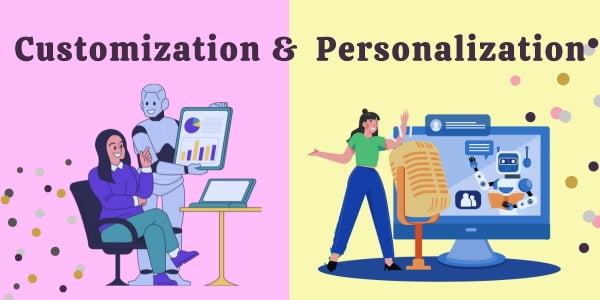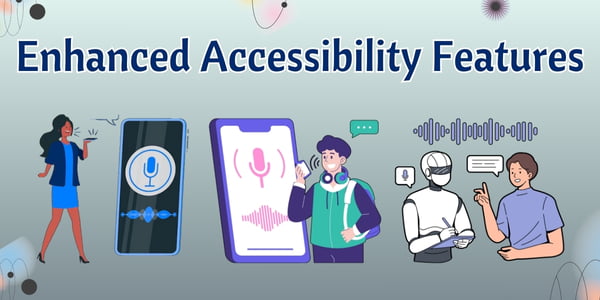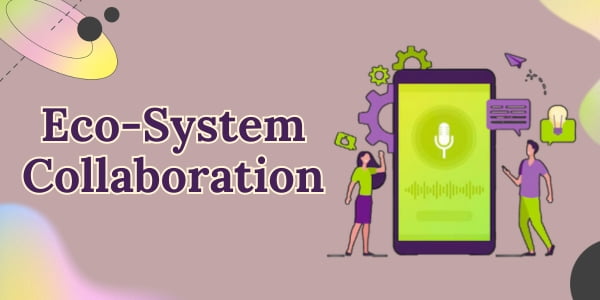From Words to Voice: How iPhone's Text-to-Speech Apps Are Changing Communication
In the era of digital transformation, the way we communicate and consume information is continually evolving. One of the most significant advancements in this domain has been the development of text-to-speech (TTS) technology, particularly in the realm of smartphones like the iPhone.
This technology is not just a convenience tool; it represents a fundamental shift in how we interact with digital content, making information more accessible and communication more inclusive.

The Evolution of Text-to-Speech Technology
Text-to-speech technology is not a new concept; it has been developing for several decades. However, its integration into smartphones, especially iPhones, has catapulted its usefulness and popularity.
Early TTS systems were robotic and monotonous, but today’s iPhone apps offer natural, human-like voices in multiple languages and dialects. This leap in quality has made TTS technology more practical and enjoyable for everyday use.
Key Takeaways:
- Early voices sounded robotic and hard to understand.
- Today, voices sound more like real people.
- iPhone apps offer voices in many languages.
- TTS technology is easy to use on smartphones.
- The voices are now clearer and more natural.
Enhancing Accessibility
One of the most profound impacts of TTS apps on iPhones is in the field of accessibility. For individuals with visual impairments or reading difficulties such as dyslexia, TTS technology is a game-changer.
It provides a means to access written content, whether it's a book, an email, or a news article, without the need for braille or other specialized tools. This level of accessibility fosters independence and ensures that everyone has equal access to information.
- Helps people with vision problems read content.
- Supports people with reading difficulties like dyslexia.
- Makes written content available to everyone.
- Lets you listen to books, emails, and articles.
- Helps people do things on their own without needing special tools.
Learning and Development
Text-to-speech apps also play a crucial role in education and learning. For children and adults learning a new language, these apps can help improve pronunciation and understanding of the language.
Additionally, listening to text rather than reading can aid in comprehension for some learners, making TTS technology an invaluable tool in diverse educational settings.
- Can help people learn how to speak new languages.
- Makes understanding new languages easier by listening.
- Great for students who learn better by listening.
- Helps students with reading challenges, like dyslexia.
- Makes learning more fun and interactive.
Impact on Productivity
In the fast-paced world we live in, multitasking has become a necessity. TTS apps on iPhones allow users to listen to emails, documents, or articles while engaging in other activities, such as driving or exercising.
This not only increases productivity but also ensures that the time spent on routine tasks is utilized effectively.
- Lets you listen to text while doing other things.
- Helps you get things done while driving or exercising.
- Lets you check work emails without reading them.
- Helps you finish tasks faster by listening instead of reading.
- Saves time for people who are always busy.
Customization and Personalization
Another significant advantage of modern text to speech apps for iPhone is the degree of customization they offer. Users can choose from a variety of voices and adjust the speed of speech to suit their listening preferences. This personalization enhances the user experience, making it more comfortable and enjoyable to listen to text content.

Among these customizable options, finding an AI voice generator free of charge can be especially valuable for users experimenting with different voice types and features without committing to a paid subscription.
- You can pick different voices and accents.
- Adjust how fast or slow the voice speaks.
- Change the tone or pitch of the voice.
- Some apps let you try different voices for free.
- Makes the listening experience more enjoyable.
Social Connectivity
Text-to-speech technology also enhances social connectivity. It enables users to 'listen' to text messages or social media posts, bridging the gap between written and spoken communication.
This is particularly beneficial for users who find it challenging to read small text on smartphone screens.
- Lets you listen to messages or social media posts.
- Helps people who have trouble reading small text.
- Makes it easier to stay connected with friends and family.
- Helps bridge the gap between writing and speaking.
- Makes communication more flexible and convenient.
The Future of TTS on iPhones
The future of text-to-speech (TTS) technology on iPhones is poised to be shaped by several key trends and advancements in technology.
These developments are expected to enhance the functionality, usability, and impact of TTS applications, making them more integral to our daily digital interactions.
Let's delve into some of these prospective advancements:
Integration of Advanced AI and Machine Learning
Future TTS systems on iPhones are likely to leverage more advanced artificial intelligence (AI) and machine learning algorithms.
This will enable the apps to better understand context, inflection, and even emotional cues in text, resulting in more natural and expressive speech output. The aim is to move beyond mere text reading to delivering a more human-like, conversational experience.
- New TTS systems will understand the meaning of words better.
- Voices will sound more natural and express feelings.
- AI will improve how the TTS reads text with emotions.
- Apps will recognize different types of content like news or stories.
- AI will make TTS smarter and more helpful.
Improved Naturalness and Expressiveness
Continuous improvements in speech synthesis technology will focus on making the voices sound even more natural and less robotic.
This includes refining the nuances of speech such as intonation, rhythm, and stress, making the listening experience more comfortable and engaging.
- Voices will sound more like real human speech.
- The rhythm and tone of speech will improve.
- TTS will sound less robotic and more friendly.
- Improvements will make listening more enjoyable.
- TTS will become more comfortable for users.
Expanded Language and Dialect Support
Future versions of iPhone TTS apps are expected to support an even wider array of languages and dialects.
This expansion will not only cater to a more diverse user base but also aid in learning and understanding foreign languages, contributing to global connectivity.
- Future apps will support even more languages.
- More accents and dialects will be available.
- Will help people from different countries connect.
- Makes learning new languages easier.
- Opens up TTS technology to a global audience.
Enhanced Accessibility Features
TTS technology is set to become even more pivotal in accessibility. We can anticipate more intuitive and user-friendly interfaces, making it easier for people with disabilities to navigate and utilize these apps.

Integration with other accessibility features on iPhones, like VoiceOver, could provide a more seamless experience.
- Apps will become even easier for people with disabilities to use.
- New features will make the apps more helpful.
- TTS apps will work better with other iPhone tools, like VoiceOver.
- People with vision or hearing impairments will benefit more.
- Accessibility will improve for everyone.
Interactivity and Responsiveness
Future TTS apps might offer more interactive capabilities, allowing users to engage in a two-way dialogue rather than just listening to text. This could include features like voice commands to pause, repeat, or explain certain sections of the text.
- Future TTS apps might allow voice commands to control the text.
- Users can ask the app to repeat or pause sections of text.
- Apps might let users interact with the text by asking questions.
- Makes TTS apps feel more like a conversation.
- Allows more control and personal interaction.
Integration with Other Applications
Deeper integration with other apps and services on the iPhone is expected. TTS technology could work seamlessly with email clients, social media apps, and even professional tools, providing an audible version of text across various platforms.
Privacy and Security Enhancements
As TTS apps become more sophisticated and integrated into our daily lives, there will be a greater emphasis on ensuring user privacy and data security.
This means developing systems that can securely process sensitive information while respecting user confidentiality.
- Future apps will protect your personal data better.
- More secure ways to handle sensitive information.
- Will keep your data safe while using TTS apps.
- Privacy features will make users feel more comfortable.
- Apps will meet high standards for security.
Impact on Education and Learning
In the educational sector, TTS technology on iPhones could become a standard tool for learning, offering diverse methods of content consumption and aiding in language learning and literacy skills.
- TTS will become an important tool in schools.
- Will help students understand lessons better.
- Makes learning easier for children and adults.
- Helps with language learning and reading skills.
- Teachers can use TTS to teach in new ways.
Eco-System Collaboration
Future developments may see more collaborations between Apple and third-party app developers, enhancing the ecosystem of TTS applications on iPhones.
This could lead to more specialized apps catering to different user needs and industries.
- Apple may work with other app makers to improve TTS.
- More apps will be created for different needs.
- Collaboration could lead to better TTS features.
- Specialized apps will be made for work or learning.
- TTS technology will become a key part of many apps.

Conclusion
Text-to-speech apps on iPhones are more than just a convenience feature; they are transforming the way we communicate and access information. By breaking down barriers in accessibility, enhancing learning opportunities, boosting productivity, and connecting people, these apps are not only changing our individual experiences but also shaping a more inclusive digital world.
In conclusion, the integration of TTS technology into iPhones represents a significant step forward in our digital journey. As we continue to embrace these advancements, we will find ourselves navigating a world where information is not just seen but also heard, ensuring that everyone, regardless of their abilities or circumstances, has equal access to the vast world of digital content.
Do you want to Learn SEO, Blogging, Freelancing, & WordPress Free of Cost?
If YES! Then follow us on YouTube.




Please Write Your Comments